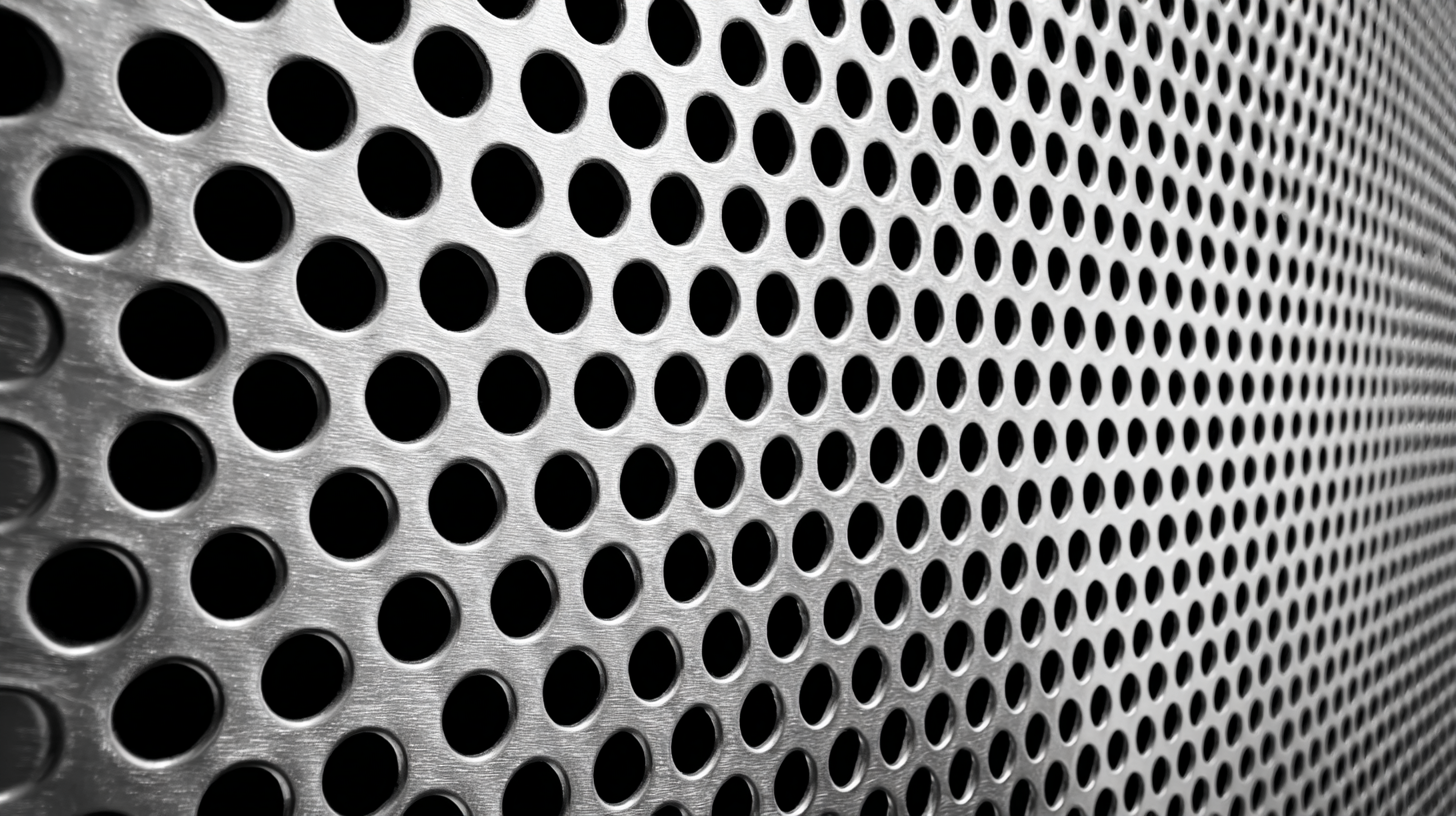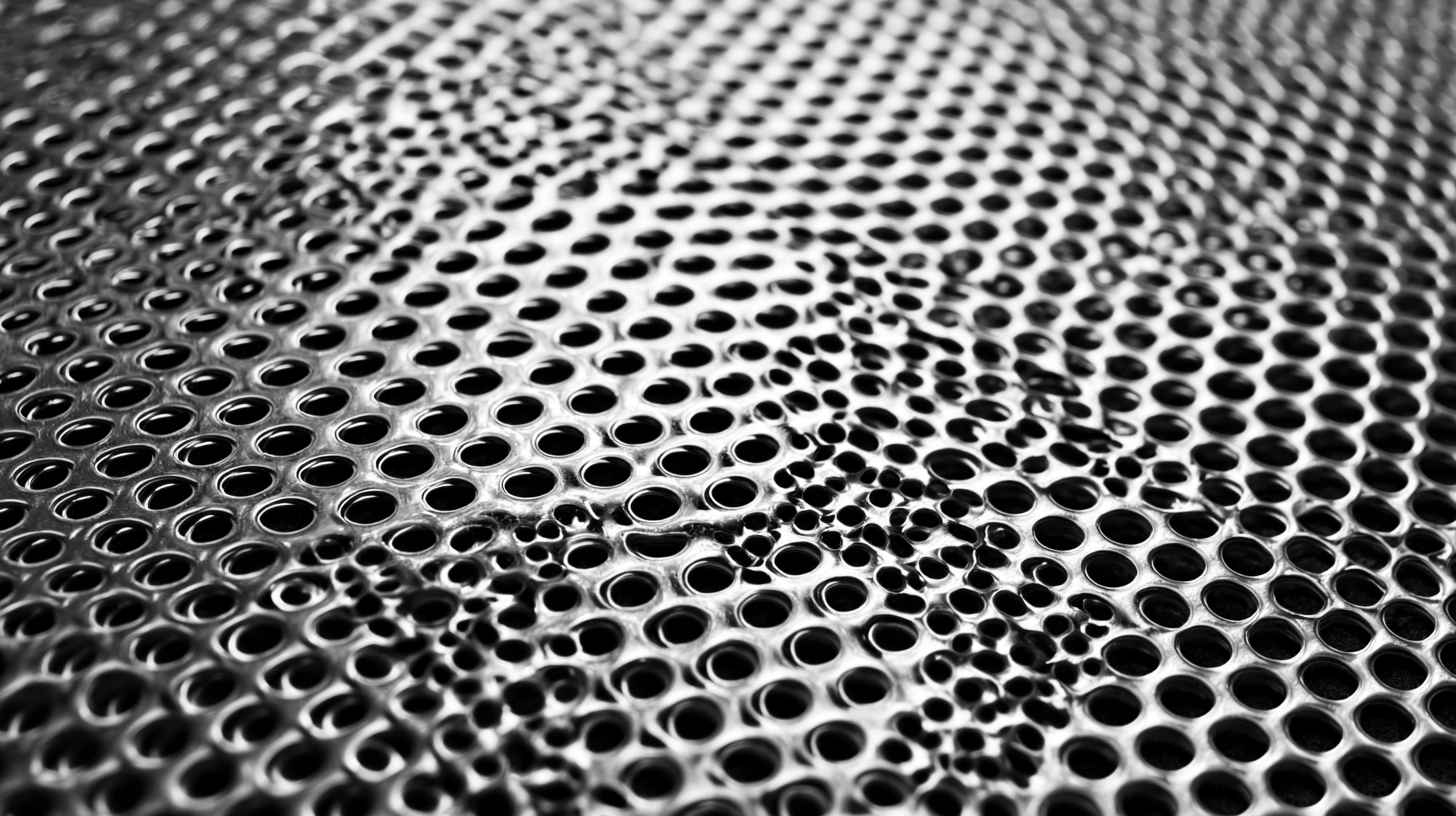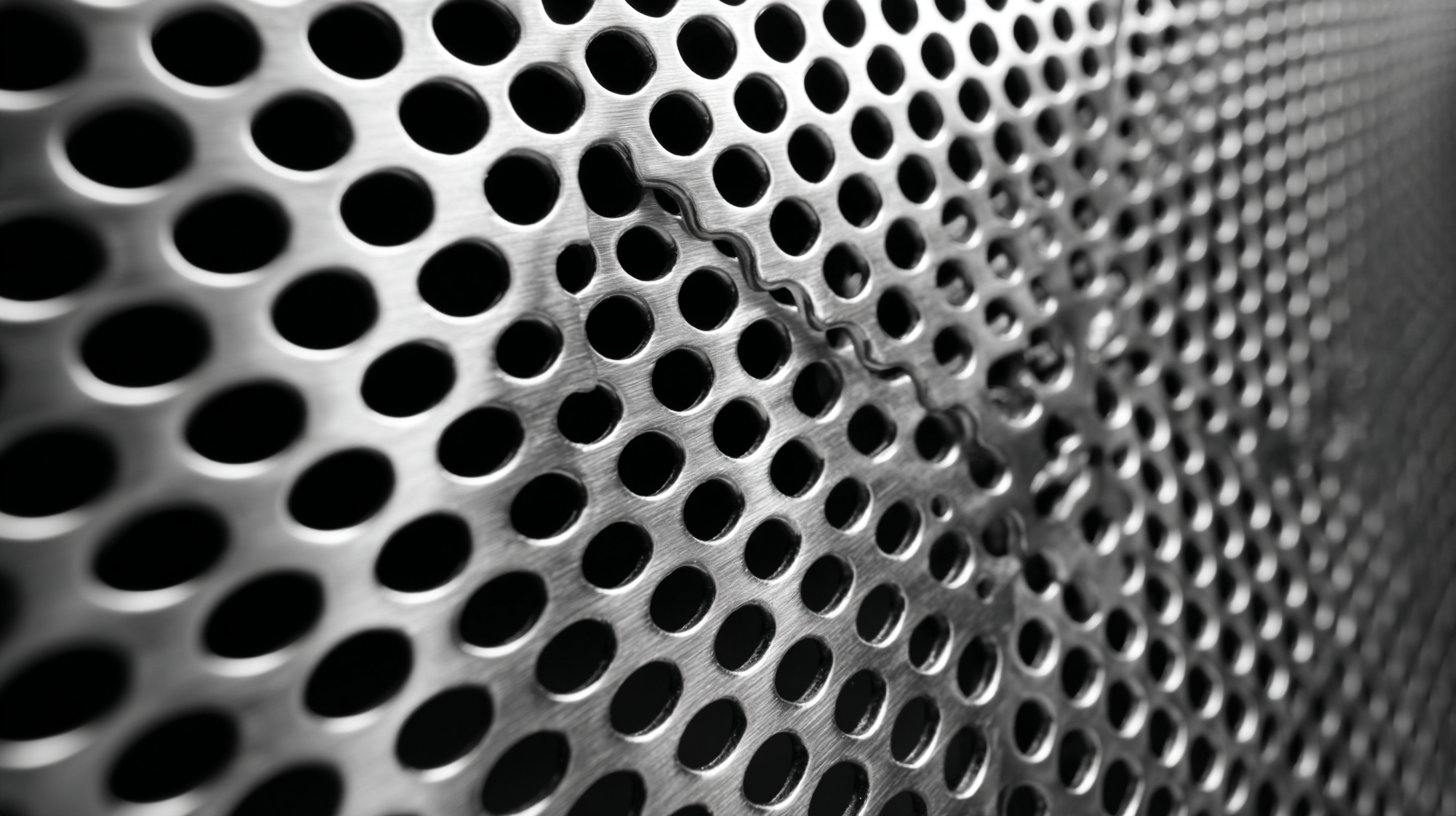As we look towards the advancements set to define 2025, the focus on technology trends in industrial applications becomes increasingly critical. Among these innovations, the use of Perforated Stainless Steel Screens stands out as a key component in enhancing operational efficiency and sustainability across various sectors. This versatile material, known for its durability and adaptability, offers numerous benefits, including improved airflow, material filtration, and reduced weight compared to traditional alternatives. As industries strive to meet growing demands while minimizing their environmental footprint, the integration of Perforated Stainless Steel Screens will play a pivotal role in optimizing processes and ensuring product quality. In this blog, we will explore the transformative impact of these screens within industrial applications and highlight emerging trends that will shape the future landscape of manufacturing and production in 2025 and beyond.

Perforated stainless steel screens are gaining momentum in various industrial applications, primarily due to their unique blend of aesthetic and functional properties. These screens not only provide durability and strength but also contribute to energy efficiency by allowing for controlled light and airflow. According to recent reports, the global perforated metal market is projected to grow significantly, driven by increasing demand in sectors such as construction and manufacturing. Specifically, incorporating perforated materials in architectural designs can enhance building performance while reducing energy costs by optimizing natural light penetration.
When selecting perforated stainless steel screens for industrial settings, consider factors such as hole pattern, thickness, and finish. Choosing the right hole size can enhance acoustic properties and visual appeal, while a suitable thickness ensures structural integrity. It's essential to assess the specific environmental conditions and requirements of your project. For instance, decorative facades not only serve an aesthetic purpose but can also provide environmental benefits, like reducing heat absorption, as seen in innovative designs enhancing the performance of educational buildings.
**Tips:** Always conduct a thorough analysis of the performance attributes of different perforated materials, and consult with industry experts to ensure that your choices align with regulatory standards and sustainability goals. Experimenting with various design patterns can also yield functional benefits while keeping the aesthetic values intact.
| Application Area | Material Type | Hole Size (mm) | Thickness (mm) | Benefits |
|---|---|---|---|---|
| Filtration Systems | Stainless Steel 304 | 0.5 | 1.2 | Corrosion Resistance |
| Architectural Design | Stainless Steel 316 | 1.0 | 1.5 | Aesthetic Appeal |
| Mining and Aggregates | Stainless Steel 304 | 2.5 | 3.0 | Durability & Strength |
| Food Processing | Stainless Steel 316L | 1.5 | 1.0 | Hygienic Properties |
| Chemical Processing | Stainless Steel 904L | 2.0 | 2.0 | Resistance to Pitting |
 Perforated stainless steel screens are increasingly becoming a key component in industrial applications, particularly for enhancing process efficiency. One of the major engineering advantages of these screens lies in their ability to optimize airflow and light penetration while maintaining structural integrity. Their design allows for controlled daylighting, which not only improves the visual comfort of indoor spaces but also reduces dependency on artificial lighting, thereby leading to significant energy savings.
Perforated stainless steel screens are increasingly becoming a key component in industrial applications, particularly for enhancing process efficiency. One of the major engineering advantages of these screens lies in their ability to optimize airflow and light penetration while maintaining structural integrity. Their design allows for controlled daylighting, which not only improves the visual comfort of indoor spaces but also reduces dependency on artificial lighting, thereby leading to significant energy savings.
Recent discussions around non-uniform perforated designs, particularly in solar screens, highlight their effectiveness in fully glazed buildings. By modulating daylighting, these screens can reduce glare and create a more comfortable environment for occupants without sacrificing visibility. This adaptability is essential in industrial applications, where balancing light and air flow can enhance both process efficiency and worker productivity. The integration of such innovative technologies aligns with the growing trend towards sustainable and efficient industrial practices, making perforated stainless steel screens a crucial aspect of modern engineering solutions.
The market for perforated stainless steel screens is poised for significant growth by 2025, driven by advancements in industrial applications and increasing demand across various sectors. Industries such as food processing, pharmaceuticals, and construction are increasingly adopting these screens due to their durability, corrosion resistance, and versatility. As manufacturers emphasize quality and efficiency, perforated stainless steel screens are becoming integral to optimizing processes and enhancing productivity.
Tip: When selecting perforated stainless steel screens for your applications, consider the thickness, hole size, and pattern to ensure maximum performance. The right choice will enhance filtration processes and extend the lifespan of the equipment, which is crucial for maintaining operational efficiency.
Furthermore, as sustainability becomes a focal point in manufacturing and construction, the demand for eco-friendly materials like perforated stainless steel will rise. Companies focusing on reducing their environmental impact are likely to prefer these screens, as they are recyclable and contribute to energy savings.
Tip: Stay updated with market trends and supplier innovations to leverage the best options available. Engaging with industry experts can provide insights into the latest technologies and improvements, helping you make informed decisions for future projects.

The industrial applications of perforated stainless steel screens are rapidly evolving as businesses prioritize sustainability and resource efficiency. According to a report by the World Steel Association, the global steel recycling rate reached approximately 85% in 2020. This significant figure underscores the value of stainless steel in circular economy initiatives, where materials can be reused indefinitely without loss of quality. This characteristic makes perforated stainless steel screens not only a durable choice for various applications but also a key player in reducing waste and conserving resources.
Moreover, the longevity of perforated stainless steel products contributes to their sustainability profile. A study published by the American Iron and Steel Institute indicates that stainless steel has a lifespan exceeding 50 years in many industrial environments, significantly outpacing alternative materials. This longevity reduces the frequency of replacements, leading to lower lifecycle costs and a decreased carbon footprint associated with manufacturing and disposing of shorter-lived products. As industries adopt these materials, they’re not just investing in performance but also in a sustainable future that aligns with global environmental goals.
In the rapidly evolving industrial landscape, the choice of materials plays a crucial role in operational efficiency. When comparing perforated stainless steel screens to alternative materials, several performance metrics come into play. One significant advantage of perforated stainless steel is its robustness; it offers superior strength and durability compared to plastic or woven wire counterparts. This strength ensures longevity in demanding industrial environments, reducing the frequency of replacements and ultimately lowering operational costs.
In addition to durability, the perforation patterns in stainless steel screens allow for effective fluid and air flow management, which is essential in applications such as filtration and separation processes. When we analyze performance metrics like flow rate, pressure loss, and ease of cleaning, perforated stainless steel often outperforms its alternatives. Moreover, its resistance to corrosion and high temperatures adds to its appeal, making it a reliable choice for industries ranging from food processing to chemical manufacturing. As organizations continue to optimize their processes, the empirical advantages of perforated stainless steel screens are likely to guide their material choices and ultimately enhance their operational efficiencies.
